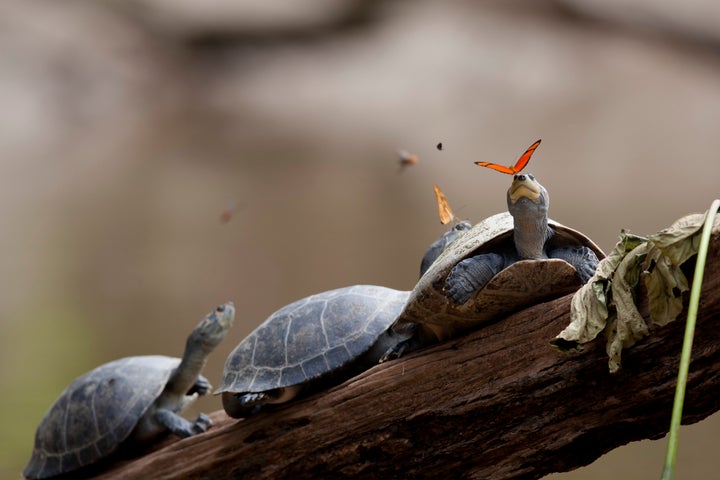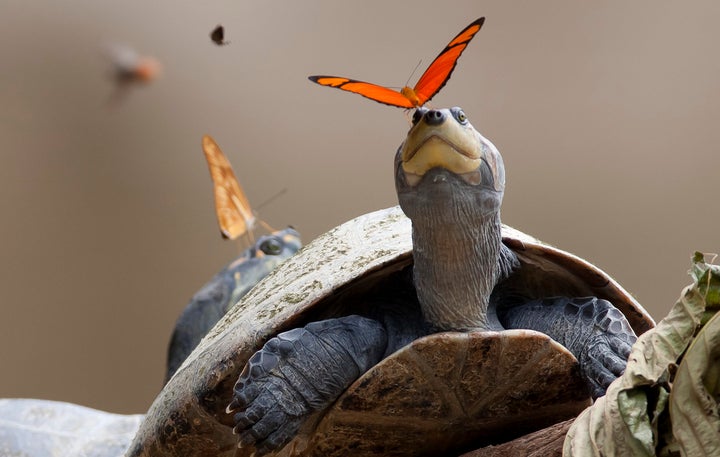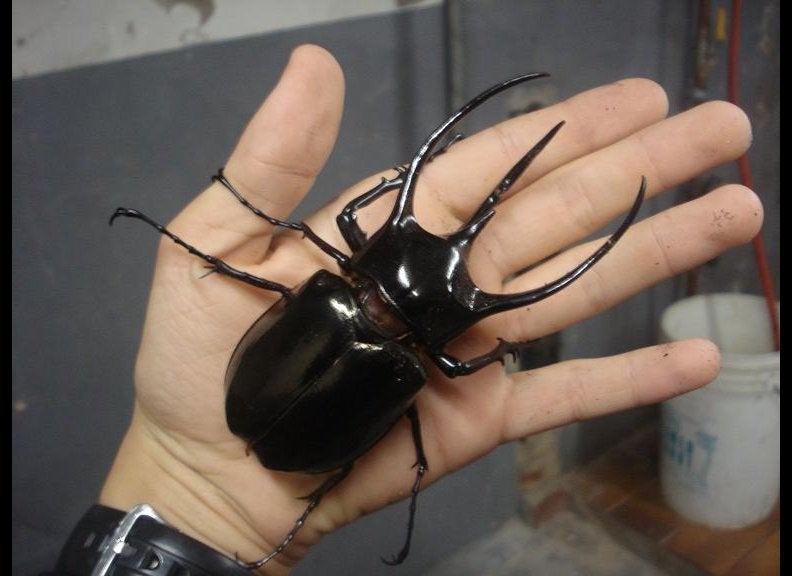When you can't find unicorn tears (and who can these days?), take a page out of the butterfly playbook and seek out the nearest turtle.
These Julia butterflies, spotted in the western Amazon, aren't just hitching a ride atop turtles. They're actually drinking the animals' tears, a startling behavior known as lachryphagy.

Julia butterflies drink turtle tears in the Amazon.
While Ecuador's Ministry of Tourism released this 2012 photo earlier, it's only recently gained momentum on the Internet, thanks to attention from blogs like Petapixel.
Butterflies, moths and even bees have all been known to drink turtles' tears, likely to take in much-needed sodium and other minerals the shelled creatures excrete.
Denizens of the Amazon rely heavily on global winds sweeping up nutrients from the deserts of northern Africa and then depositing them in the rainforest to fuel growth. But by the time those winds hit the western reaches of the Amazon, much of the sediment has already fallen out, forcing animals to look for minerals elsewhere.
"Sodium and some of those other micronutrients are hard to find in nature," explained Carlos de la Rosa, an aquatic ecologist and director of Costa Rica's La Selva Biological Station, to National Geographic. "Butterflies and bees consume nectar, and nectar does not have a lot of salt. But they still need salt for egg production and for their metabolism."

The butterflies ingest needed minerals through the turtles' tears.
Geoff Gallice, a graduate student at the Florida Museum of Natural History who has witnessed lachryphagy firsthand, told LiveScience in 2013 that butterflies don't stop at turtle tears. They often sip on animal urine, muddy river banks, sweaty clothes and sweaty people. Given the chance, butterflies will also drink crocodile tears.
Scientists agree that the unusual feeding behavior likely doesn't affect the turtles much, aside from obstructing their view of potential predators.
Also on HuffPost:

